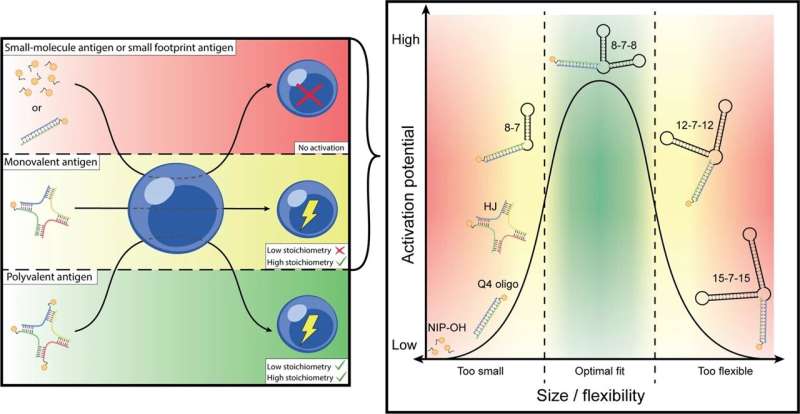This article has been reviewed according to Science X's editorial process and policies. Editors have highlighted the following attributes while ensuring the content's credibility:
fact-checked
peer-reviewed publication
trusted source
proofread
New study challenges our understanding of the immune system

A recently published study from Aarhus University may mean a textbook chapter on the immune system will have to be rewritten.
In the study, published in the journal Nature Communications, the researchers reveal crucial new knowledge about B cells, which form a vital element in the body's defense system. B cells are the cells that generate protective antibodies when we are vaccinated or have an infection—and it is also the B cells that produce harmful antibodies in connection with allergies or autoimmune diseases.
The researchers have examined the earliest step in activating the B cells, namely the activation mechanism that is triggered when the cells recognize a specific target or 'enemy'—an antigen.
"Previously, it was believed that the antigens from, for example, viruses or vaccines would have to cross-bind a B-cell's receptors on the cell surface. That's what it says in all the textbooks. But now we have shown that even antigens that can only bind one receptor at a time are able to activate the B cells," says Søren Degn, associate professor at Department of Biomedicine, who is the senior author of the article.
The discovery is important on several levels, he explains.
"The result is significant because it represents a breakthrough in our understanding of how these important immune cells 'recognize' their enemies. Once we understand what is going on, we can imitate it in the design of new vaccines, to ensure maximum effect. One might say that our findings can make us better at mimicking the pathogenic microorganisms, and thus better at provoking or 'cheating' the immune system into generating a good immune response when we vaccinate."
A hotly debated topic in the field
The discovery is interesting for both the immunological field and for cell biology in general, because the researchers have shed new light on the foundation for how receptors on the surface of cells send signals into the cells—a key biological process.
"The study enables us to better understand the background for one of the most important processes in the immune system, and one of the most important processes in cell biology. But it is clear that, in the long term, this could also have important application-oriented aspects," says Søren Degn.
The researchers have begun preclinical vaccine trials with the aim of translating the findings into clinically relevant vaccine design. They are also attempting to use the same tools in reverse, to target and turn off harmful immune system responses such as allergic reactions and autoimmune diseases.
"When we understand how the B cells are activated, we can create better vaccines. In the slightly longer term, we may also be able to switch off B-cell activation in cases where it is harmful. We are studying both of these in the CellPAT basic research center at Aarhus University," says Søren Degn.
For many years, the activation of B cells has been the object of a great deal of discussion among researchers, because the predominant model for how immune recognition takes place could not explain all of the observations.
In the new study, the researchers at the Department of Biomedicine and iNANO in Aarhus, in a cross-disciplinary collaboration with the Max Planck Institute in Munich, have created new tools that make it possible to puncture the predominant model and thereby bury the decades-old paradigm.
"We have shown that the way in which the activation of B cells has been explained over the past thirty or forty years is wrong. This is an important finding, because it opens the door to better vaccines and better treatment of a large group of diseases," says Søren Degn.
More information: Alexey Ferapontov et al, Antigen footprint governs activation of the B cell receptor, Nature Communications (2023). DOI: 10.1038/s41467-023-36672-0





















